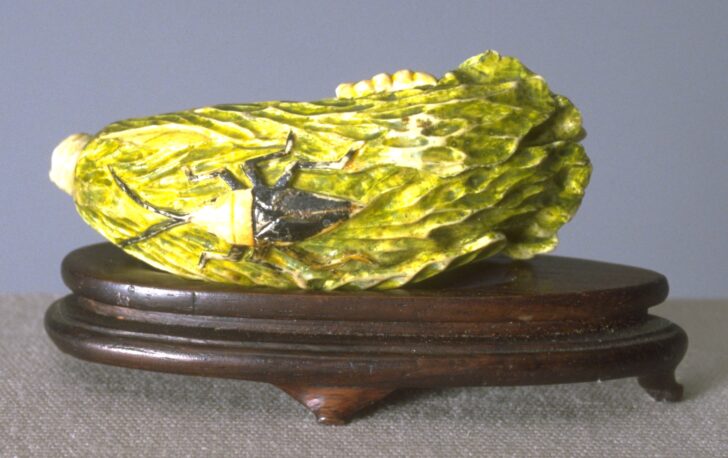Ivory snuff bottle
Chinese

Description
Subject Matter:
Snuff bottles have fascinated Western and Asian collectors since they were first produced in China in the early part of the 18th century. Conceived as precious containers for ground tobacco imported into China, snuff bottles were initially made for the emperor and the court, and eventually produced in much greater quantities for a public who enjoyed their functionality as well as their display as symbols of status.
These exquisite miniatures, which measure between one-and-a-half and three inches high, not only illustrate the technical virtuosity of Qing dynasty craftsmen, but also provide a window on life and culture in late imperial China.
For example, early 18th-century imperial glass and painted enamel bottles show the influence of the Jesuits at court, and the imperial fascination with Western technical advances. Carved examples in different mediums such as jade and glass illustrate the relationships between craftsmen working at the imperial workshops, and the favoured motifs across materials. Later 19th-century versions reveal how earlier imperial tastes became popular with the general public, while confirming the continuing status of snuff use in Qing society.
https://www.christies.com/features/Chinese-Snuff-Bottles-Collecting-Guide-7650-1.aspx
Physical Description:
An ivory snuff bottle in the shape of a leafy green vegetable. It is ombré from dark green on one end to a lighter green/yellow on the other end. On the side of the vegetable is an insect. The snuff bottle is lying on a wooden stand.
Usage Rights:
If you are interested in using an image for a publication, please visit https://umma.umich.edu/request-image/ for more information and to fill out the online Image Rights and Reproductions Request Form.